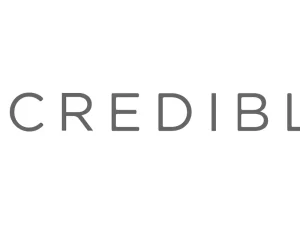Student loans are financial instruments specifically designed to provide funds to students to cover the costs associated with higher education. These loans play a crucial role in enabling students to pursue their academic goals and obtain a college or university degree. In this comprehensive guide, we will delve into the intricacies of student loans, exploring what they are, how they work, and the key factors to consider when obtaining and managing them.
I. Definition and Purpose of Student Loans:
Student loans are loans specifically tailored for students to finance their education-related expenses, including tuition fees, books, supplies, housing, and living costs. These loans serve as a financial bridge, allowing students and their families to access education despite the rising costs associated with higher education. The purpose of student loans is to provide individuals with the necessary funds to pursue their educational aspirations, expand their knowledge, and enhance their career prospects.
II. Types of Student Loans:
1. Federal Student Loans:
Federal student loans are loans provided by the U.S. Department of Education. They are the most common type of student loans and typically offer more favorable terms and conditions compared to private student loans. The main types of federal student loans include: a. Direct Subsidized Loans: These loans are based on financial need, and the government pays the interest while the borrower is in school, during the grace period, and during deferment periods. b. Direct Unsubsidized Loans: Available to both undergraduate and graduate students, these loans are not based on financial need, and the borrower is responsible for all interest. Interest accrues from the disbursement of the loan. c. Direct PLUS Loans: These loans are available to graduate or professional students and parents of dependent undergraduate students. They require a credit check and have a higher interest rate compared to subsidized and unsubsidized loans. d. Perkins Loans (Discontinued after 2021): Perkins Loans were low-interest loans for students with exceptional financial need. However, this program was discontinued after 2021.
2. Private Student Loans:
Private student loans are offered by private financial institutions such as banks, credit unions, and online lenders. These loans have terms and conditions determined by the lender and may have varying interest rates, repayment options, and eligibility criteria. Private loans often require a credit check and may require a cosigner, especially for students with limited credit history or low income.
III. Borrowing Limits and Eligibility:
The borrowing limits for student loans depend on various factors, including the type of loan, the student’s educational level (undergraduate or graduate), the cost of attendance, and the student’s financial need. Federal student loans have specific loan limits set by the government, while private student loans may offer more flexibility but with potentially higher borrowing limits and interest rates. To be eligible for federal student loans, students must meet certain requirements, including being a U.S. citizen or eligible noncitizen, having a Social Security number, being enrolled or accepted in an eligible degree or certificate program, and maintaining satisfactory academic progress. Private student loans may have additional eligibility criteria determined by the lender.
IV. Interest Rates and Repayment Terms:
Interest rates for student loans can either be fixed or variable. A fixed interest rate remains constant throughout the loan term, providing borrowers with predictable monthly payments. Variable interest rates can fluctuate over time based on market conditions, which means monthly payments may vary. Repayment terms for student loans depend on the type of loan and the repayment plan chosen. Federal student loans offer various repayment plans, including standard repayment, extended repayment, graduated repayment, and income-driven repayment plans. These plans provide borrowers with different options based on their financial situation and goals. Private student loans may have different repayment terms and options depending on the lender.
V. Repayment Options and Assistance:
Repaying student loans typically begins after a grace period, which is a predetermined period after graduation or leaving school when borrowers are not required to make loan payments. Once the grace period ends, borrowers must start making monthly payments. If borrowers face financial hardships or specific circumstances, they may be eligible for loan deferment or forbearance, which allow them to temporarily postpone or reduce their loan payments. Deferment and forbearance options are available for federal student loans, and private lenders may offer similar options, although terms may vary. Income-driven repayment plans are particularly helpful for borrowers who have difficulty making their monthly payments. These plans adjust the monthly payment based on the borrower’s income and family size, making the payments more manageable. Additionally, loan forgiveness programs, such as Public Service Loan Forgiveness (PSLF), may be available for borrowers who meet specific criteria, such as working in certain public service professions.
VI. Responsibilities and Considerations:
While student loans provide access to education, it is important for borrowers to approach them responsibly and consider the long-term implications. Here are some key responsibilities and considerations:
1. Loan Repayment: Borrowers must understand the terms and conditions of their loans, including interest rates, repayment schedules, and the total amount to be repaid. It is essential to create a budget and ensure that loan payments can be made on time to avoid late fees and potential negative effects on credit scores.
2. Financial Literacy: It is crucial for borrowers to be financially literate and understand concepts such as interest rates, compound interest, loan amortization, and personal budgeting. This knowledge helps borrowers make informed decisions and effectively manage their loans.
3. Borrowing Limits: Borrowing only what is necessary and carefully considering the total loan amount is essential to avoid excessive debt. It is advisable to explore other sources of funding, such as scholarships, grants, work-study programs, and personal savings, before relying solely on student loans.
4. Credit Impact: Responsible loan repayment contributes to building a positive credit history, while defaulting or making late payments can have adverse effects on credit scores. Maintaining a good credit score is crucial for future financial endeavors, such as obtaining loans, credit cards, or mortgages.
5. Loan Forgiveness and Discharge: Understanding the conditions and requirements for loan forgiveness and discharge programs, such as PSLF or discharge due to total and permanent disability, can provide relief for borrowers who qualify.
VII. Loan Servicers and Resources:
Loan servicers are companies responsible for managing and collecting student loan payments. They provide borrowers with information, process payments, and offer assistance regarding loan repayment and options. It is important to maintain open communication with loan servicers and notify them of any changes in contact information or financial circumstances. There are numerous resources available to help borrowers navigate the complexities of student loans. The U.S. Department of Education, as well as various educational institutions and financial literacy organizations, offer information, tools, and counseling services to help borrowers understand their rights and responsibilities, calculate repayment options, and make informed decisions regarding their student loans.
Conclusion:
Student loans are financial tools that enable students to pursue higher education despite the rising costs. By understanding the different types of student loans, eligibility criteria, repayment options, and responsibilities, borrowers can make informed decisions, effectively manage their debt, and successfully navigate the complexities of student loan repayment. Responsible borrowing, financial literacy, and proactive communication with loan servicers are key to ensuring a secure financial future while reaping the benefits of a college or university education.










